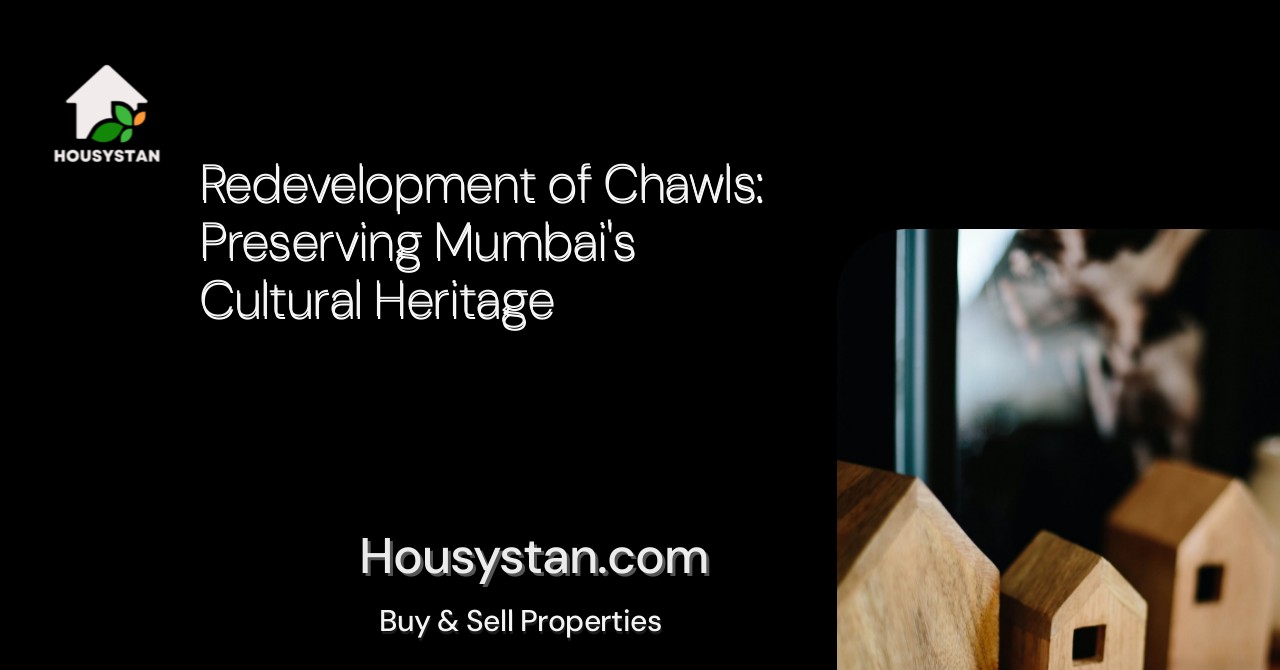Redevelopment of Chawls: Preserving Mumbai's Cultural Heritage
Read latest blogs and articles from Housystan

The Information mentioned here was last updated on:
28/12/2025The redevelopment of chawls in Mumbai stands as a pivotal movement in the city’s ongoing transformation, balancing the need for modern infrastructure with the preservation of its cherished cultural legacy. Mumbai, renowned for its vibrant spirit and diverse communities, owes much of its character to the iconic chawls that have dotted its neighborhoods for generations. These age-old structures, originally built to accommodate mill workers and migrants, fostered a sense of unity, belonging, and resilience among residents. As urbanization accelerates, the demand for updated housing and enhanced amenities grows, making the redevelopment of chawls both a necessity and an opportunity.
Chawl redevelopment projects in Mumbai are carefully designed to retain the social fabric that defines these communities. Developers and architects work closely with local stakeholders, ensuring that the new constructions incorporate spaces for social interaction and communal gatherings, reminiscent of the original layouts. By doing so, the essence of Mumbai’s chawl culture—known for its open corridors, shared courtyards, and neighborly camaraderie—is preserved even as residents transition to modern apartments equipped with contemporary facilities.
This transformation is not solely about improving living standards but also about safeguarding the intangible heritage embedded within these historic neighborhoods. The redevelopment process provides a unique platform to blend tradition with innovation, offering residents secure, well-ventilated, and sustainable homes while preserving the unique identity of places like Girgaon, Lalbaug, and Parel. Moreover, these initiatives often include the restoration of temples, community halls, and other landmarks, maintaining the area’s cultural continuity.
- Verified Tenants/Buyers
- Unlimited Property Listing
- Zero subscription/charges fee
For Mumbai, chawl redevelopment is a testament to the city’s ability to evolve while respecting its roots. By prioritizing both infrastructural advancement and heritage conservation, these projects contribute to a more inclusive urban landscape. Prospective homeowners, investors, and local communities alike benefit from enhanced property values, improved safety, and strengthened community bonds. Ultimately, the redevelopment of chawls in Mumbai is more than a real estate venture—it is a promise to honor the city’s history while building a progressive future for all its residents.